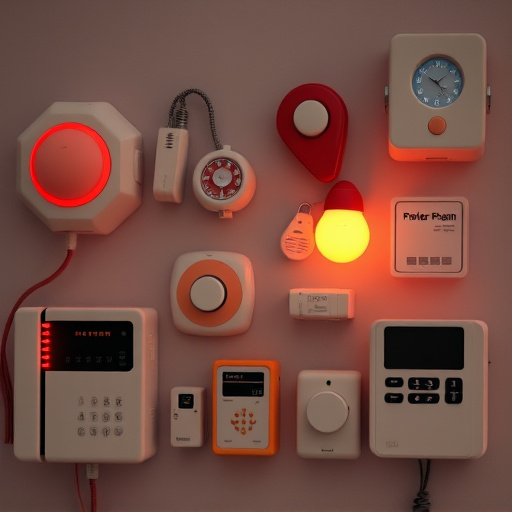Personal Alarm Sounds are vital safety tools with adaptable coverage areas for diverse environments. They offer immediate distress alerts through loud noises and location mapping, aiding rescue in urban or remote settings. Customizable alert zones let users define safe boundaries for daily activities. Privacy concerns can be addressed through encryption and user controls, balancing tracking benefits with individual privacy rights.
Personal distress signals with tracking capability have emerged as powerful tools for safety and peace of mind. In this article, we explore how understanding your own distress signs can save lives, combined with advanced tracking technology that pinpoints your location. Learn about setting up alert zones tailored to your needs and addressing privacy concerns to ensure secure usage. Discover the benefits of these features within a comprehensive personal alarm sound coverage area.
- Understanding Personal Distress Signals
- Tracking Technology: A Lifesaver
- Setting Up Alert Zones
- Privacy Concerns and Solutions
Understanding Personal Distress Signals
Personal distress signals, often characterized by unique alarm sounds, are designed to draw immediate attention and alert nearby individuals or emergency services within a specified coverage area. These signals serve as a vital communication tool when someone is in danger or needs urgent assistance. By utilizing specific Personal Alarm Sounds, individuals can convey their plight effectively, ensuring swift response times.
The coverage area associated with these alarms varies depending on the device’s capabilities and environment. In urban settings, where hustle and bustle are the norm, signals may have longer ranges to account for the constant movement and potential interference. Conversely, in more secluded or natural environments, the coverage area might be more limited but tailored to the specific needs of the individual.
Tracking Technology: A Lifesaver
In today’s digital era, tracking technology has emerged as a powerful tool for personal safety and distress signals. When combined with innovative designs, it offers a sense of security, especially in situations where an individual may find themselves in peril or need immediate assistance. A simple yet effective solution is the integration of personal alarm sounds with comprehensive coverage areas.
These alarms are meticulously crafted to emit distinct and loud noises, ensuring they can be heard over distances. The tracking capability allows users to pin their location on a map, providing first responders with precise coordinates. This feature is invaluable when an individual finds themselves in an unfamiliar or remote area, enabling swift assistance and rescue operations.
Setting Up Alert Zones
Setting up alert zones is a crucial step in equipping yourself with a personal distress signal system. These zones act as virtual boundaries that trigger alerts when crossed or entered, ensuring immediate response times during emergencies. Users can customize their coverage area based on their daily routines and activities—be it running in parks, hiking trails, or commuting through urban areas.
By defining specific alert zones, individuals can rest assured that they’ll receive timely notifications if they inadvertently venture into potentially dangerous territories. This feature is particularly beneficial for solo adventurers, outdoor enthusiasts, or anyone with mobility concerns, enabling them to stay safe and be quickly located in case of distress.
Privacy Concerns and Solutions
With the integration of personal distress signals featuring tracking capabilities comes a natural concern about privacy. Users must be confident that their data and location are secure from prying eyes, especially in emergency situations where every second counts. Privacy can be protected through robust encryption protocols that safeguard personal information shared with tracking services. This ensures that only authorized personnel or designated contacts can access the user’s location and distress signals.
Additionally, users should have control over their privacy settings, allowing them to define the coverage area for alerts and choose who receives notifications. By enabling this level of customization, individuals can balance the benefits of a tracking system with their right to privacy. This dual approach—strong encryption and user-centric controls—can foster trust while ensuring that personal alarm sounds remain private within specified boundaries.
Personal distress signals with tracking capabilities have revolutionized personal safety, offering a sense of security in an increasingly connected world. By understanding these signals and leveraging tracking technology, individuals can take control of their well-being. Setting up alert zones and addressing privacy concerns through robust solutions ensure that help is always within reach, whether in urban settings or remote areas. The integration of personal alarm sound and coverage area considerations makes this technology a reliable game-changer for safety, empowering folks to navigate life’s challenges with confidence.
